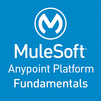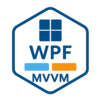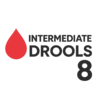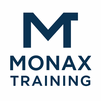
Master the functionalities of Openlink Endur with this comprehensive training program focused on front-to-back trade lifecycle management, risk analytics, scheduling, and settlements. Participants will gain hands-on experience in deal configuration, curve management, JVS scripting, and integration techniques. Designed for energy and commodity trading professionals, the course enables learners to streamline operations, ensure regulatory compliance, and optimize trading performance using Endur’s powerful ETRM/CTRM capabilities across global energy markets.
Openlink Endur Training Interview Questions Answers - For Intermediate
1. What is the purpose of the End-of-Day (EOD) process in Endur?
The End-of-Day (EOD) process in Endur is a scheduled batch operation that performs key system updates and data consolidations required for accurate daily reporting and operations. It typically includes activities such as deal validation, mark-to-market calculations, P&L snapshots, risk calculations, accrual postings, and data archiving. EOD ensures that all trades entered during the day are processed through the required workflows and made ready for settlement, accounting, and compliance reporting. It also resets various system states and caches in preparation for the next trading day.
2. How does Endur handle Mark-to-Market (MtM) valuations?
Endur performs Mark-to-Market (MtM) valuations by revaluing open trades against current market data to determine their fair value. This process uses pricing curves, volatility surfaces, and discount factors to compute the present value of future cash flows. MtM is essential for calculating unrealized P&L and risk exposures. It is typically part of the EOD process and can be customized based on instrument type, portfolio, or valuation methodology. The results are stored in P&L tables and are accessible through reports and dashboards for traders and risk managers.
3. What is the role of the Simulation Engine in Endur?
The Simulation Engine in Endur allows users to model and evaluate hypothetical scenarios by recalculating valuations, risk metrics, and cash flows under varying assumptions. It can simulate changes in market data, deal structures, or portfolio compositions. This is crucial for stress testing, sensitivity analysis, and scenario planning. Users can define custom simulations using parameter sets and view results in pre-built or custom reports. The Simulation Engine supports both standard and Monte Carlo methods for advanced analysis.
4. What is a CurveType and how is it used in Endur?
CurveType in Endur defines the structure and behavior of a pricing or risk curve, such as forward price curves, interest rate curves, or volatility curves. Each CurveType governs how data is stored, retrieved, and interpolated. For example, a power forward curve may use a block structure for hourly prices, whereas an oil curve may use monthly averages. CurveTypes are linked to instruments and valuation functions, ensuring consistent and accurate pricing. They also support versioning and scenario management for risk analysis.
5. What is the purpose of the Deal Check framework in Endur?
The Deal Check framework in Endur is a configurable validation system that ensures trades meet predefined business rules and compliance criteria before being saved or confirmed. These checks can include validations on volume, price limits, counterparty exposure, or deal completeness. Deal checks can be applied globally or to specific deal types and user roles. They can be configured through the GUI or extended using JVS for complex business logic. This helps reduce operational risk and ensures data integrity.
6. How are Counterparties managed in Endur?
Counterparties in Endur are managed through the Party Manager module, which stores all relevant details such as legal names, contact information, credit ratings, and contractual terms. Each counterparty can have multiple roles—such as buyer, seller, transporter, or scheduler—and these roles determine their interaction within specific trades. Credit checks, exposure limits, and tax setups are also managed at the counterparty level. Endur supports hierarchical relationships, allowing users to manage parent-child party structures and legal entities effectively.
7. What are Grids in Endur and how are they used?
Grids in Endur are tabular UI components that display deal data, positions, P&L, and other information in a structured and user-friendly format. They are used extensively in deal capture, reporting, scheduling, and risk views. Grids support filtering, grouping, and pivoting of data, making it easy for users to analyze large volumes of information. Custom grids can be created for specific teams, and grids can also be configured to include formulas, color coding, and dynamic fields for enhanced usability.
8. Explain the concept of Templates and their importance.
Templates in Endur serve as predefined structures for capturing deals, configuring reports, and automating workflows. They ensure consistency in how data is entered and processed across the organization. Deal templates simplify trade entry by pre-populating fields and enforcing validation rules. Reporting templates standardize the format and content of reports across business units. Templates improve operational efficiency, reduce errors, and allow for faster onboarding of new users.
9. What is a Settlement Instruction (SI) in Endur?
A Settlement Instruction (SI) in Endur defines how and where payments are made or received for a given transaction. SIs include details such as bank account numbers, currencies, settlement dates, payment methods, and intermediary banks. These are linked to counterparties and specific deal types. The system can automatically select the correct SI based on rules, reducing manual effort. Accurate SI setup is critical to avoid payment failures and ensure smooth reconciliation with external financial systems.
10. What are Indexes in Endur and how are they utilized?
Indexes in Endur represent external or internal reference prices used in deal valuation and pricing. Examples include Brent Crude, Henry Hub, or custom indexes defined by the user. Indexes can have different granularities—daily, monthly, hourly—and are often tied to forward curves. They are referenced in deals, formulas, and simulations. The system supports index management, including rollover logic, index formula creation, and historical adjustments, ensuring robust pricing mechanisms for diverse commodities.
11. How does the Pricing Structure work in Endur?
Pricing Structure in Endur is a hierarchical configuration that maps how deals derive their pricing information. It includes components such as indexes, formulas, price curves, and seasonal adjustments. This structure ensures that every deal can be consistently valued using the correct data sources. Pricing structures can be customized to reflect regional market conditions, commodity-specific factors, and complex pricing rules. This framework plays a crucial role in achieving accurate mark-to-market valuations and supporting various financial products.
12. What is the use of the Reference Explorer in Endur?
The Reference Explorer in Endur provides a centralized view of all reference data used across the application, including parties, instruments, locations, indexes, book hierarchies, and more. It allows users to search, view, and edit master data without needing to access multiple modules. Reference Explorer is essential for maintaining data quality and enabling consistent deal capture, reporting, and settlement. It supports version control and auditing for compliance tracking.
13. What is a Book in Endur and how is it structured?
A Book in Endur is an organizational unit used to group trades for management, reporting, and control purposes. Books are part of a hierarchical structure, allowing companies to represent business units, desks, or trading strategies. Each trade must be assigned to a Book, which determines who can access it, how it’s reported, and how P&L and risk are tracked. Books are also used for limit monitoring and internal controls.
14. How are Fees and Charges modeled in Endur?
Fees and charges in Endur are modeled using the “Charges” framework, which allows users to define additional costs or revenues associated with deals, such as transportation, storage, or brokerage. These can be flat-rate, percentage-based, or formula-driven, and can apply at the deal or transaction level. Charges are included in P&L and settlement calculations, ensuring accurate financial reporting. They can be automated through deal templates or manually added during deal capture.
15. What is the Transaction Explorer and how does it differ from the Deal Manager?
Transaction Explorer is a tool in Endur that allows users to view, search, and manage individual transactions within deals. It provides a granular view of delivery periods, volumes, pricing details, and statuses. Deal Manager, on the other hand, focuses on managing the overall deal header and its associated metadata. While Deal Manager handles the structural and high-level data, Transaction Explorer gives visibility into the detailed components that drive scheduling, settlement, and valuation.
Openlink Endur Training Interview Questions Answers - For Advanced
1. How does Openlink Endur support integration with external platforms such as ERP, treasury systems, and market data providers in a real-time trading environment?
Openlink Endur provides a comprehensive and modular integration framework that supports both real-time and batch communication with external systems such as ERP (e.g., SAP, Oracle), treasury management platforms, risk systems, clearinghouses, and market data providers (e.g., Bloomberg, ICE, Reuters). The integration is typically accomplished using a combination of technologies, including message queues (JMS, MQ), web services (SOAP/REST), file-based interfaces (CSV, XML), and direct database access. Endur’s “Endur Connect” and “Integration Manager” components offer prebuilt adapters and APIs for standard data exchange, while custom interfaces can be developed using JVS (Java Virtual Scripting) or .NET for more advanced logic. For ERP integration, Endur handles GL posting, payment instructions, and reconciliation, while treasury systems interface for funding, cash forecasting, and FX exposure management. Market data is streamed into Endur in real time or at scheduled intervals, enabling the update of forward curves, volatility surfaces, and spot prices. The system supports event-driven triggers, meaning actions such as deal capture, validation, or price updates can automatically initiate downstream workflows or notifications. Endur also includes audit logs and message tracking for integration events, ensuring end-to-end transparency and fault tolerance. In high-frequency trading or global commodity environments, this seamless integration allows for accurate position keeping, timely settlement, and proactive risk monitoring across the enterprise ecosystem.
2. What is the structure and significance of the Reference Data Framework in Openlink Endur, and how does it support enterprise-wide data consistency?
The Reference Data Framework in Openlink Endur serves as the foundational layer that underpins all trading, risk, and operational workflows within the platform. It consists of a centralized repository of static and semi-static data entities such as counterparties, portfolios, books, locations, commodities, indexes, curve definitions, delivery points, legal entities, and instrument definitions. Each of these entities is uniquely identified and version-controlled, ensuring consistency across different modules such as deal capture, scheduling, settlement, and accounting. Endur’s Reference Explorer provides a structured UI for managing this data, enabling authorized users to add, modify, or deactivate records with full audit trails and role-based access control. The system also allows hierarchical relationships, such as party-parent structures, commodity groups, or location networks, which are vital for roll-up reporting and risk aggregation. The framework supports integration with external master data systems like SAP MDM, Markit EDM, or in-house data warehouses to ensure enterprise alignment. Through scheduled jobs and API-based data ingestion, Endur can pull updates from these systems while maintaining referential integrity internally. Moreover, validation rules can be configured to prevent data quality issues—such as missing tax IDs, duplicate index names, or invalid delivery zone codes. In global implementations, the ability to manage multiple naming conventions, currencies, and time zones adds to the robustness of the framework. The reference data architecture also plays a critical role in compliance and audit-readiness by ensuring that all downstream processing—be it valuation, settlement, or regulatory reporting—is driven by standardized and approved data definitions.
3. What is the Event Model in Endur and how does it drive key operational processes?
The Event Model in Endur is a core architectural feature that represents all deal-related financial and physical activities as discrete events. Each trade, once captured and processed, generates one or more event records, such as payments, fees, deliveries, valuations, and accounting postings. These events serve as the operational triggers that drive downstream workflows—settlement processing, confirmation generation, journal entries, and risk reporting. Events are characterized by properties like event type, event date, status, amount, associated transaction, and counterparty. The model supports both financial and physical commodities, and events can be configured based on deal type, instrument structure, and legal terms.
Advanced configurations allow grouping of events into event chains, enabling the system to track the lifecycle of a transaction from initiation to final settlement. Users can define event rules to determine when events are triggered—e.g., accruals at month-end or settlements at maturity. Events can also be netted or rolled, especially in cross-commodity and cross-currency portfolios. The Event Model is tightly integrated with simulation and reporting engines, allowing risk and finance teams to slice data by event dimensions like exposure date or flow type. From an audit and reconciliation perspective, the Event Model ensures complete traceability from the deal level to the accounting system, providing transparency and compliance with SOX, IFRS, and other regulatory frameworks.
4. How does Endur handle multi-commodity portfolios and cross-asset risk aggregation?
Endur is uniquely positioned to handle multi-commodity trading across power, gas, oil, emissions, metals, and agricultural products, with cross-asset risk aggregation being a cornerstone of its architecture. The platform allows the configuration of a shared data model where deal templates, risk metrics, curve definitions, and simulations can be extended across asset classes. Each commodity can have its own units of measure, market conventions, and delivery logic, yet still roll up into enterprise-wide dashboards. Cross-asset portfolios are managed via hierarchical books and portfolios, which are then used to aggregate P&L, VaR, sensitivities, and exposure.
The Simulation Engine and Risk Manager modules can calculate consolidated risk measures such as delta-equivalent exposure, cross-commodity VaR, or stress scenarios applied simultaneously to multiple assets. Correlation matrices and covariance structures are used to reflect diversification or concentration effects. Custom weighting can be applied at the trade or asset class level to reflect strategic exposures. Additionally, multi-commodity hedging strategies—such as hedging gas with power or crude with refined products—can be modeled, tracked, and evaluated in terms of effectiveness. The result is a highly scalable, real-time platform for risk and performance analysis in globally diversified trading operations.
5. What is Openlink’s JVS (Java Virtual Scripting), and what are its primary use cases in complex implementations?
Java Virtual Scripting (JVS) is Openlink Endur’s proprietary scripting language based on the Java API, designed to provide flexibility in customizing business logic without altering the core application. JVS scripts can be used in a wide range of use cases including trade validation, automated deal enrichment, EOD workflow customization, report generation, user-defined fields, and event handling. These scripts can be triggered through user actions (e.g., saving a deal), batch jobs, or scheduled tasks within the Endur environment. In complex implementations, JVS is indispensable for implementing business-specific rules such as automated allocation of deals to portfolios, validation of counterparty credit lines during trade capture, or enrichment of deals with third-party data. JVS can also be used to create custom wizards and user interfaces, manipulate reference data, integrate with external APIs, or extend standard reports. Performance optimization, error handling, and transaction logging are commonly embedded into scripts for audit and compliance needs. Since JVS operates within the application’s JVM, it allows high-performance execution while maintaining tight integration with Endur’s object model, making it a powerful tool in the hands of technical consultants and developers.
6. How does the system support ISO and regional market compliance for energy scheduling (e.g., CAISO, PJM, ERCOT)?
Endur supports regional energy market compliance through its scheduling and logistics modules, which are capable of modeling market-specific workflows and regulatory requirements. For Independent System Operators (ISOs) like CAISO, PJM, and ERCOT in North America, Endur can be configured with custom nomination templates, tag logic, and interfaces that align with NAESB and OASIS standards. Each ISO has unique requirements for daily/hourly nominations, imbalance handling, congestion pricing, and ancillary services—these are embedded into Endur via tailored deal templates, scheduling calendars, and JVS-based automation. For example, in PJM markets, Endur can model day-ahead and real-time positions, integrate with eMKT submissions, and reconcile meter data with nominations. In ERCOT, real-time 15-minute intervals and congestion costs can be tracked and reported. The platform also supports tagging of deals for renewable energy credits, greenhouse gas obligations, or demand response participation. Integration with ISO portals can be facilitated via XML or EDI messages. These capabilities ensure that physical delivery traders and compliance teams can manage ISO interactions without relying on external spreadsheets or manual tracking, significantly improving accuracy and operational efficiency.
7. How does Endur handle curve shaping and advanced interpolation techniques for forward curves?
Curve shaping in Endur allows users to model non-linear, time-variant, or irregular pricing structures that are common in physical and derivative commodity markets. This is particularly important in markets like power, where hourly, block, or seasonal prices must be constructed from limited inputs. Endur supports various curve shaping and interpolation techniques including linear, flat-forward, log-linear, exponential, spline-based, and even user-defined interpolation via formulas or scripting. Users can define shaping rules to translate sparse data (e.g., monthly forward prices) into high-resolution values (e.g., hourly) using historical load profiles, statistical distributions, or seasonal scalars. Curve shaping is managed through the Market Manager module, which provides tools for defining curve hierarchy, node points, and shaping profiles. Advanced use cases involve building synthetic curves by combining multiple inputs—such as blending crude grades or creating composite indexes. The shaped curves feed directly into deal pricing, MtM valuation, and risk simulations, ensuring alignment across trading, risk, and finance departments.
8. What mechanisms does Endur offer to implement custom workflow automation and user notifications?
Endur provides a suite of tools to automate business workflows and trigger user notifications based on system events, data changes, or rule violations. These mechanisms include JVS scripts, Workflow Manager, Task Manager, and Email Alerting Framework. Workflows can be configured to handle multi-step processes such as trade approval, credit limit review, collateral assignment, or confirmation matching. The system supports conditional branching, approval hierarchies, escalation paths, and audit logging. Notifications can be triggered based on simulation results, limit breaches, failed settlements, or incomplete data. These alerts can appear as pop-ups, dashboard messages, or automated emails with embedded deal or risk information. Task Manager enables the creation of action items linked to deals or events, which are then assigned to specific users or roles. Automation enhances operational efficiency by reducing manual intervention, improving data accuracy, and ensuring that critical activities are completed on time. When integrated with external platforms like Slack or MS Teams, notifications can also extend into broader enterprise communication channels.
9. How does Openlink Endur support physical asset modeling such as power plants or storage facilities?
Endur offers robust support for modeling physical assets like power plants, gas storage units, and pipeline transportation through its optional modules and deal templates. For example, power plants can be modeled using unit commitment logic that incorporates operational constraints such as ramp rates, heat rates, start-up costs, minimum run times, and fuel efficiency curves. Gas storage assets can be modeled with injection/withdrawal constraints, inventory tracking, and variable tariff rates.
These assets are represented as virtual or physical instruments, and trades can be captured against them to simulate operational dispatch, generate nominations, and calculate economic value. The system supports optimization routines—such as least-cost dispatch or value-maximizing storage strategies—through integrations with external solvers or in-house optimization engines. Revenue and cost streams from assets are captured through charge structures, and P&L impacts can be attributed down to the asset or unit level. This integration allows asset owners and operators to align trading strategies with operational capabilities in real time.
10. Describe how Endur manages the complexity of FX risk in multi-currency trading environments.
In multi-currency environments, Endur handles FX risk through built-in functionalities that track currency exposures, valuation currency mappings, FX forward hedges, and real-time conversion rates. Trades can be captured in one currency while settled or reported in another, and the system automatically calculates the associated FX gain or loss using prevailing spot or forward rates. Curve definitions for FX rates—both spot and term structures—are maintained within Market Manager and updated via market data feeds.
FX exposure is calculated per transaction and can be aggregated across portfolios, books, or business units. Simulation runs can include FX delta and scenario analysis to evaluate the impact of currency fluctuations on enterprise value. For hedging, FX forward and swap trades can be captured directly and linked to the underlying exposure. Endur also integrates with treasury platforms to automate hedge accounting, cash settlement, and reconciliation. This comprehensive approach ensures transparency in FX risk management, aligns with IFRS/GAAP standards, and supports regulatory reporting in jurisdictions with strict currency disclosure requirements.
11. How does Endur implement hedge accounting and effectiveness testing under IFRS 9?
Hedge accounting in Endur is facilitated through a specialized module that allows designation of hedge relationships (fair value hedge, cash flow hedge, or net investment hedge) between hedging instruments and hedged items. The system tracks the effectiveness of each hedge using prospective and retrospective testing methods, such as the dollar-offset method, regression analysis, or critical terms match. These tests can be scheduled as part of the EOD or monthly close process. Endur generates accounting entries based on hedge effectiveness results, segregating effective and ineffective portions of the hedge. Documentation requirements such as hedge designation, risk management objective, and effectiveness strategy are stored within the system for audit compliance. Reports and dashboards provide visibility into hedge ratios, residual risks, and accounting adjustments. Integration with ERP systems ensures that hedge-related accounting entries are reflected accurately in financial statements. This allows organizations to mitigate P&L volatility arising from derivative instruments while staying compliant with IFRS 9 or FASB ASC 815.
12. How does Openlink Endur manage data archival and system performance for long-running implementations?
In long-running implementations where years of trade, market, and risk data accumulate, Endur provides data archival tools that enable organizations to maintain system performance while preserving historical records. The Data Archival framework allows administrators to configure archiving rules for trade records, event logs, simulation results, and audit trails. Archiving can be done based on date ranges, deal statuses, or business relevance (e.g., closed trades, expired instruments).
Archived data can be moved to separate databases or storage systems, indexed for easy retrieval, and excluded from live simulations or reports. Archiving policies are usually aligned with business, legal, and compliance requirements for data retention. This process not only optimizes performance by reducing the size of active data tables but also helps in maintaining reporting accuracy by segregating active and historical data. Regular archiving and database tuning—alongside data purging strategies—are best practices in enterprise-grade Endur deployments.
13. How is deal versioning and auditability achieved in Endur?
Endur maintains a full audit trail and version control system for all trades and reference data objects. Every time a trade is created, modified, or cancelled, a new version is stored along with metadata such as user ID, timestamp, and change reason. These versions can be viewed and compared using Deal Viewer or Audit Trail reports, allowing users to track what was changed, by whom, and when. Fields such as price, volume, terms, and counterparty details are all auditable. This audit functionality extends to JVS scripts, reference data records, pricing curves, and simulation configurations. Role-based access controls restrict who can modify sensitive objects, while approvals and maker-checker workflows ensure governance. In regulated environments, this auditability is crucial for meeting internal audit, SOX, or external regulatory requirements. The system also supports data export for forensic analysis or integration with third-party GRC platforms.
14. What tools are available in Endur for testing and deploying configurations and code changes safely?
Endur provides several tools to support safe and controlled testing and deployment of configuration and code changes. Object Manager allows for versioning and promotion of objects (scripts, templates, grids) across environments. Developers use this tool to package changes with dependency tracking and deploy them from dev/test to staging or production. UAT environments are typically refreshed with production-like data for robust testing of new features. Additionally, the Environment Management Framework supports environment-specific configurations using tokens or parameterization, ensuring changes are portable and consistent. Automated test scripts using JVS or external automation tools can validate configurations and business rules. For code changes, Endur environments often integrate with Git, Jenkins, or Azure DevOps for CI/CD pipelines. These practices allow teams to release frequently and safely while minimizing production incidents.
15. How does Endur support energy trading companies with sustainability goals and ESG reporting?
Endur is increasingly being leveraged by energy trading companies to support sustainability initiatives and ESG reporting. The platform allows tracking of environmental attributes such as carbon credits, renewable energy certificates (RECs), and emission obligations. Trades can be tagged with ESG labels or linked to sustainability KPIs, enabling the generation of ESG-aligned P&L or exposure reports. For compliance with frameworks like TCFD or SFDR, Endur can aggregate emissions data across portfolios and compare it against targets or limits. Moreover, Endur supports modeling of green energy products, PPAs (Power Purchase Agreements), and carbon offset mechanisms. Custom reports can display avoided emissions, green trade volumes, or percentage of portfolio under renewable contracts. When integrated with ESG data providers or sustainability platforms, Endur helps bridge the gap between trading performance and sustainability compliance, enabling companies to pursue decarbonization strategies while maintaining financial discipline.
Course Schedule
| Dec, 2025 | Weekdays | Mon-Fri | Enquire Now |
| Weekend | Sat-Sun | Enquire Now | |
| Jan, 2026 | Weekdays | Mon-Fri | Enquire Now |
| Weekend | Sat-Sun | Enquire Now |
Related Courses
Related Articles
Related Interview
- SailPoint IdentityIQ Interview Questions Answers
- Advanced Piping Stress and Flexibility Analysis Training Interview Questions Answers
- 3DS MAX Training Interview Questions Answers
- SC-300 Microsoft Identity and Access Administrator Training Interview Questions Answers
- SAP Signavio Training Interview Questions Answers
Related FAQ's
- Instructor-led Live Online Interactive Training
- Project Based Customized Learning
- Fast Track Training Program
- Self-paced learning
- In one-on-one training, you have the flexibility to choose the days, timings, and duration according to your preferences.
- We create a personalized training calendar based on your chosen schedule.
- Complete Live Online Interactive Training of the Course
- After Training Recorded Videos
- Session-wise Learning Material and notes for lifetime
- Practical & Assignments exercises
- Global Course Completion Certificate
- 24x7 after Training Support













 Join our Live Instructor-Led online classes delivered by industry experts
Join our Live Instructor-Led online classes delivered by industry experts